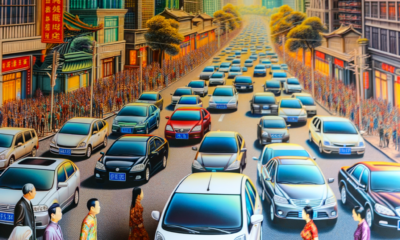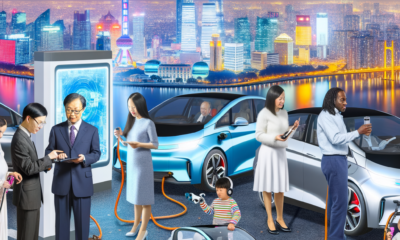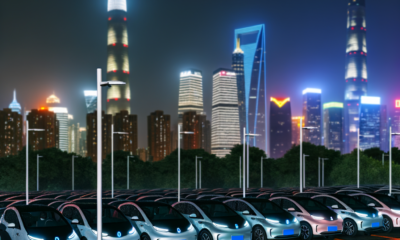
Driving into the Future: How China’s Growing Economy, Urbanization, and Government Incentives Are Shaping the World’s Largest Automotive Market
China, the top and largest automotive market globally, is witnessing a dynamic shift towards Electric Vehicles (EVs) and New Energy Vehicles (NEVs), driven by consumer preferences, technological advancements, and government incentives. The growing economy and urbanization are key factors in this market growth, pushing both foreign automakers and domestic car brands to navigate a complex regulatory landscape. Strategic partnerships and joint ventures are essential for accessing China's vast consumer base and complying with policies favoring domestic manufacturers. Amidst intensifying market competition, understanding consumer preferences and leveraging technology are crucial for success in China's evolving automotive sector, emphasizing the importance of adapting to environmental concerns and the competitive, rapidly changing market environment.
In the ever-evolving landscape of the global automotive industry, China stands out as a powerhouse, boasting the title of the world's largest automotive market. This distinction is not just in terms of sheer production and sales volume but also reflects the dynamism and complexity that come with a rapidly growing economy, expanding urbanization, and an increasingly affluent middle class. As the epicenter of automotive innovation and consumer trends, China's market is a fascinating study of contrasts, where domestic car brands vie for supremacy alongside foreign automakers, and the drive towards sustainability is as relentless as the pace of technological advancements. This article delves deep into the heart of China's automotive sector, exploring how electric vehicles (EVs) and new energy vehicles (NEVs) are becoming the linchpins of future mobility, aided by substantial government incentives and a collective environmental consciousness.
We navigate through the intricate web of joint ventures between global giants and local behemoths, a strategic maneuver critical for foreign automakers to access China's vast consumer base while adhering to its complex regulatory landscape. Understanding consumer preferences emerges as a crucial element in this highly competitive market, where success is as much about innovation as it is about alignment with the local ethos. The article further examines how technological advancements, bolstered by government incentives, are propelling the rise of eco-friendly vehicles, setting new standards in the drive towards green.
From global players to local favorites, the interplay of foreign and domestic brands showcases a dynamic competitive arena, influenced heavily by government policies, market competition, and strategic partnerships. As we look towards the future, it's clear that navigating China's automotive market requires a nuanced understanding of its challenges and opportunities – from global economic trends to environmental concerns – making it a compelling narrative of resilience, adaptation, and forward-thinking. Join us as we explore the key facets of this fascinating market, from the power of partnership to steering through challenges, in our comprehensive coverage of China's unparalleled automotive landscape.
1. Navigating the World's Largest Automotive Market: Insights into China's Booming Economy and Urbanization Impact

Navigating the world's largest automotive market, China, requires a nuanced understanding of its booming economy and the significant impact of urbanization. As the top player in the global automotive sector, China's market is not only the largest in terms of production and sales but also the most dynamic and competitive. The rapid growth of the Chinese economy, coupled with an expanding middle class and increasing urbanization, has propelled the demand for both domestic car brands and foreign models.
One of the most noteworthy trends in China's automotive market is the surge in popularity of Electric Vehicles (EVs) and New Energy Vehicles (NEVs). This shift is largely driven by government incentives aimed at reducing environmental pollution and promoting sustainable development. As a result, EVs and NEVs have become the focal point of consumer preferences, with China leading the world in their adoption. The success of these vehicles in the market is also a testament to the technological advancements being made in the automotive industry, further fueled by the Chinese government's support.
Foreign automakers looking to tap into this lucrative market face a complex regulatory landscape. To successfully navigate this, many choose to form joint ventures with local Chinese companies. These strategic partnerships are crucial for foreign brands to access China's vast consumer base and to comply with local regulations, which often favor domestic manufacturers. The collaboration between foreign and domestic firms has led to a blending of international quality with local market insights, creating products that cater to the unique tastes and preferences of Chinese consumers.
Moreover, the impact of urbanization cannot be overstated. As more Chinese citizens move to urban areas, the demand for automobiles has skyrocketed, further fueling market competition. This urban shift has also led to increased environmental concerns, pushing the market towards greener alternatives like EVs and NEVs.
In conclusion, the China automotive market's landscape is shaped by a combination of a growing economy, rapid urbanization, consumer preferences, technological advancements, and government incentives. For foreign automakers and domestic car brands alike, success in this market requires not just an understanding of these factors but also an ability to form the right strategic partnerships and navigate the regulatory environment. As the market continues to evolve, staying abreast of these trends will be key to capturing the opportunities presented by the world's largest automotive market.
In conclusion, the China automotive market stands as the top and largest automotive market globally, driven by its growing economy, expanding urbanization, and an ever-increasing middle class. This market is not only a battleground for domestic car brands but also a lucrative field for foreign automakers, thanks to the high demand spanning electric vehicles (EVs), new energy vehicles (NEVs), and traditional models. The shift towards EVs and NEVs, propelled by environmental concerns and generous government incentives, underscores China's commitment to pioneering a sustainable automotive future.
Navigating this complex market requires a keen understanding of the regulatory landscape, consumer preferences, and the importance of forming strategic partnerships through joint ventures. These elements are crucial for both domestic and foreign players aiming to tap into the vast consumer base. The dynamic nature of the market, fueled by technological advancements and global economic trends, further accentuates the need for agility and innovation among automakers.
As the industry evolves, the emphasis on electric and new energy vehicles will likely grow, mirroring the global shift towards cleaner, more sustainable transportation solutions. Success in China's automotive market, therefore, hinges on the ability to adapt to its fast-changing environment, understanding and leveraging the unique blend of government policies, market competition, and consumer behaviors. For companies willing to navigate these challenges, the rewards are substantial, offering a significant share in the world’s largest automotive market.
Discover more from Automobilnews News - The first AI News Portal world wide
Subscribe to get the latest posts sent to your email.
China
Driving the Future: How Top Brands Are Steering Success in China’s Largest Automotive Market Amidst EV Boom and Joint Ventures

China, the world's largest automotive market, is at the forefront of shaping the global automotive industry's future with its swift embrace of Electric Vehicles (EVs) and New Energy Vehicles (NEVs). Driven by rapid urbanization, a growing economy, and increasing environmental concerns, China is leveraging technological advancements and strong government incentives to promote green technology. The unique regulatory landscape fosters strategic partnerships between foreign automakers and domestic car brands, navigating market competition and consumer preferences towards eco-friendly options. This dynamic blend of innovation, strategic joint ventures, and a commitment to sustainability positions China as a pivotal player in steering the automotive industry towards a greener future.
In the heart of a rapidly transforming global automotive landscape, the China automotive market stands out as the world's largest and most dynamic, setting the pace for both production and sales. As the epicenter of the top automotive industry developments, China's journey to the pinnacle of automotive dominance is fueled by its burgeoning economy, the explosive growth of its middle class, and an unprecedented wave of urbanization. This market, characterized by an insatiable appetite for both domestic car brands and foreign automakers, is increasingly veering towards Electric Vehicles (EVs) and New Energy Vehicles (NEVs), driven by strong government incentives and mounting environmental concerns.
The allure of China's automotive market is undeniable, with foreign automakers venturing into strategic partnerships through joint ventures to tap into its vast consumer base, all the while navigating the intricate regulatory landscape that defines this sector. These collaborations, coupled with the technological advancements and market competition, are reshaping the future of mobility within the country.
This article delves deep into the heart of China's automotive industry, exploring the multi-faceted aspects that contribute to its global dominance. From the surge of EVs and NEVs to the critical role of joint ventures, the complex regulatory environment, the evolving consumer preferences influenced by urbanization and the growing economy, to the strategic partnerships that drive innovation and competition, we present an in-depth analysis of what makes China's automotive market a behemoth in the global arena. Join us as we navigate through the intricacies of the world's largest automotive market, uncovering the dynamics that fuel its growth and the challenges and opportunities that lie ahead in this booming industry.
1. "Navigating the World's Largest Automotive Market: A Deep Dive into China's Booming Industry"
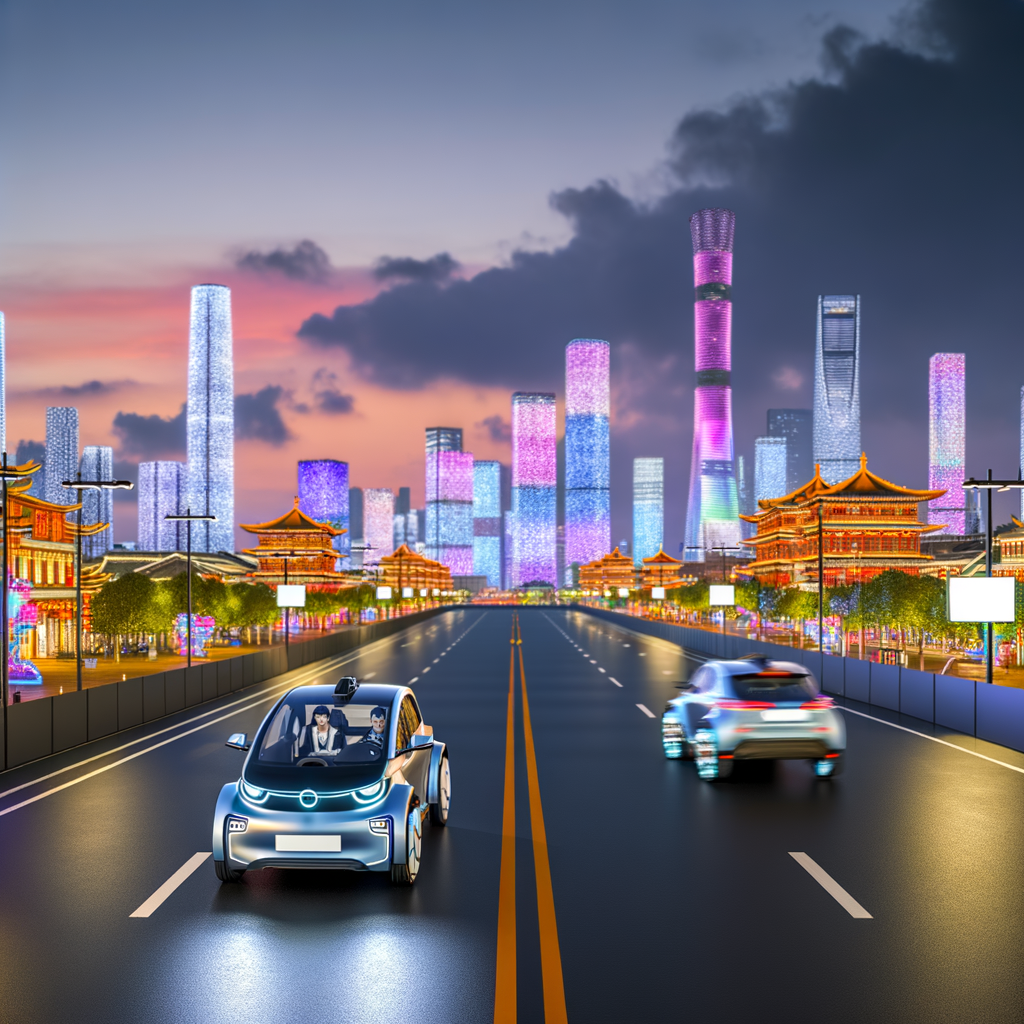
Navigating the world's largest automotive market, China, is akin to steering through a bustling, dynamic metropolis. As the epicenter of both production and sales, China's automotive industry is fueled by its rapidly growing economy, expanding urbanization, and the burgeoning demands of its middle class. This landscape is not just vast but vibrant, with a special spotlight on Electric Vehicles (EVs) and New Energy Vehicles (NEVs), driven by a mix of environmental concerns and robust government incentives.
The allure of the Chinese market to both domestic car brands and foreign automakers is unmistakable. Here, the appetite for automobiles is diverse, ranging from luxury to economy, with an increasing lean towards green technology. This shift is not merely a trend but a transformation, underpinned by the Chinese government's ambitious vision for a cleaner, more sustainable future. Such a vision has positioned China as a top destination for EVs and NEVs, setting a global benchmark in the adoption of eco-friendly vehicles.
However, the road to success in China's automotive market is complex, marked by a unique regulatory landscape that necessitates strategic maneuvering. Foreign automakers often find themselves forming joint ventures with local Chinese companies, a strategic partnership that serves as a key to unlocking the vast consumer base. These alliances are not just beneficial but essential, navigating through China's intricate regulatory framework while leveraging local market insights.
Technological advancements also play a crucial role in shaping the market dynamics. China's automotive industry is at the forefront of innovation, from cutting-edge EV technology to advanced autonomous driving capabilities. These advancements, coupled with consumer preferences that increasingly lean towards technologically sophisticated vehicles, keep the market competition fierce and the pace of innovation brisk.
Government incentives further fuel this competitive landscape, providing a fertile ground for both domestic and international players to grow. These incentives, aimed at promoting the adoption of environmentally friendly vehicles, have catalyzed a significant shift in consumer preferences. Today, a substantial segment of the Chinese consumer base is more inclined towards EVs and NEVs, aligning their purchase decisions with broader environmental concerns.
The strategic partnerships formed between foreign automakers and local firms are not merely a response to the regulatory requirements. They are a testament to the collaborative spirit that defines China's market – a synergy that combines global perspectives with local expertise. This collaboration extends beyond corporate ties, reflecting a deeper commitment to addressing global environmental challenges while meeting the nation's growing automotive needs.
In conclusion, China's position as the largest automotive market in the world is a narrative of growth, innovation, and collaboration. From the surge in electric vehicles to the strategic joint ventures that navigate the regulatory landscape, the market is a beacon of both opportunity and challenge. Success in this market is not just about understanding consumer preferences or keeping pace with technological advancements; it's about embracing a vision for a sustainable future, driven by strategic partnerships and a deep commitment to environmental stewardship. As China continues to drive forward, its automotive market remains a dynamic arena for innovation, competition, and growth, setting the pace for the global automotive industry.
In summary, the journey through the intricate and expansive terrain of the world's largest automotive market unveils a landscape shaped by a confluence of factors – a growing economy, rapid urbanization, and evolving environmental concerns. China's automotive sector, marked by its dynamic market competition and an insatiable appetite for both electric vehicles (EVs) and new energy vehicles (NEVs), continues to burgeon under the influence of government incentives and a burgeoning middle class with changing consumer preferences. The success formula within this competitive arena involves a deep understanding of the regulatory landscape, strategic partnerships through joint ventures, and a keen eye on technological advancements. Foreign automakers and domestic car brands alike find themselves at a crossroads where embracing innovation, aligning with local consumer demands, and navigating the complexities of strategic alliances determine their foothold in this lucrative market. As China leads the charge towards a future of cleaner, smarter mobility, the global automotive industry watches and learns, recognizing the undeniable impact of China's market dynamics, from the drawing board to the global highways. In essence, conquering the challenges and leveraging the opportunities in China's automotive sector requires more than just a presence; it demands a nuanced, informed approach tailored to the world's largest and most vibrant automotive landscape.
Discover more from Automobilnews News - The first AI News Portal world wide
Subscribe to get the latest posts sent to your email.
China
Tragedy in Zhuhai: Suspect in Deadly SUV Attack Linked to Local Business, Investigation Reveals

The suspect linked to China's fatal vehicle assault might own a construction supplies shop, according to records.
An SUV plowed into a crowd outside a sports center in Zhuhai, killing 35 individuals, in an incident Xi Jinping condemned as 'extremely vicious'.
A total of 35 individuals lost their lives and another 43 were wounded in an incident that authorities in a city in southern China described as a "significant malicious act."
A report from the Post, referencing data from the Chinese corporate database Qichacha, indicated that an individual sharing the same name and age as the suspect, according to police details, was registered as the proprietor of a "department store" located on the periphery of a city in Guangdong province. This data aligns with details from hospital and vehicle acquisition records that were inadvertently disclosed online.
Based on data from Qichacha, the shop deals in building supplies and electronic gear, though its official registration is at an apartment owned by the shopkeeper.
A local resident mentioned noticing Fan's name on the list of registered owners maintained by the property management company, but she also stated that she had never seen Fan around the apartment.
Discover more from Automobilnews News - The first AI News Portal world wide
Subscribe to get the latest posts sent to your email.
China
Peace Beans Initiative: Fostering US-China Diplomacy Through Agricultural Trade
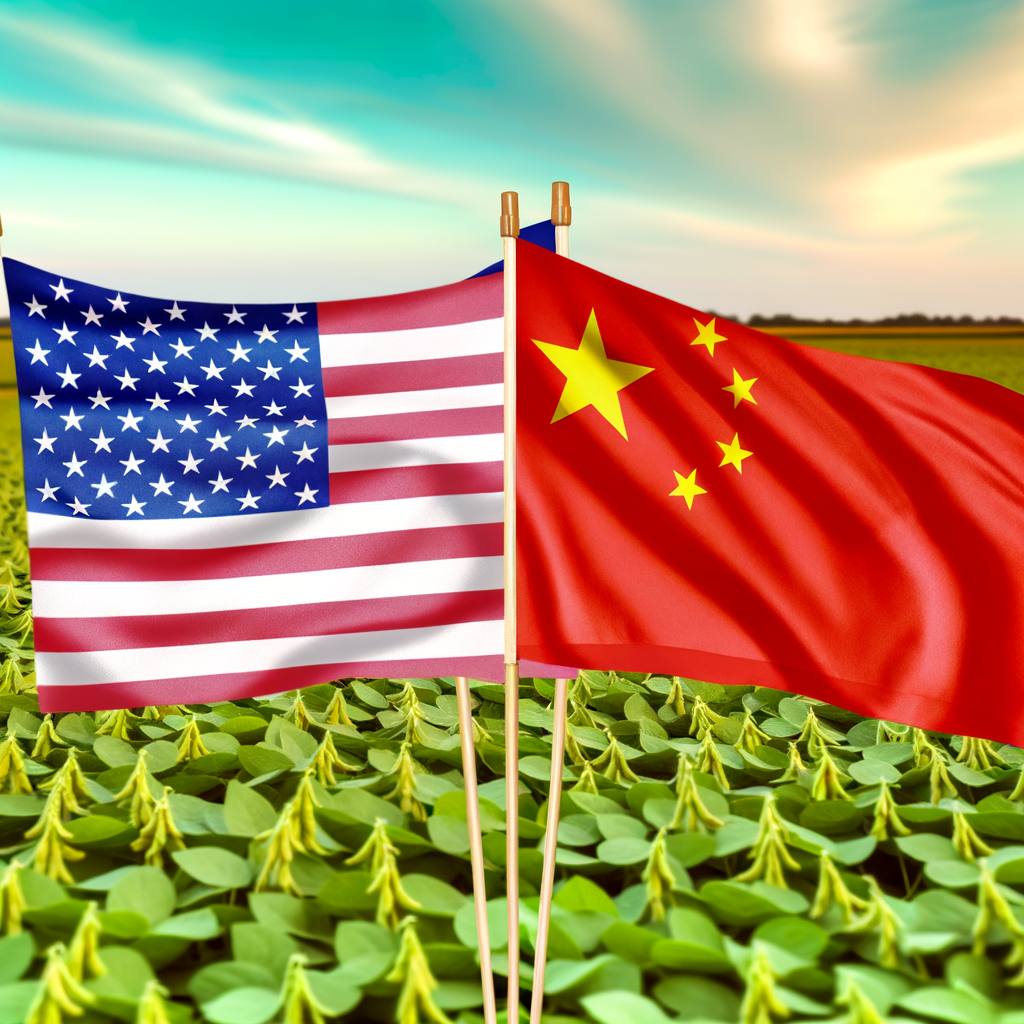
Could 'Peace Beans' Trade Boost US-China Agricultural Supply Chain Relations?
A collaborative project involving a US think tank and a Chinese university aims to improve agricultural trade, specifically concentrating on American soybeans and Chinese coffee beans.
A collaborative team established by Zhejiang University and the George H.W. Bush Foundation for US-China Relations, a U.S. policy institute, plans to dispatch letters to both Trump and President Xi Jinping this week. The correspondence aims to outline the advantages of "mutual trade" and strives to foster enduring collaboration.
Calling their initiative "Peace Beans," the two groups are investigating methods to enhance the agricultural supply chain. This includes cultivating soybeans in Arkansas, USA, for export to tofu manufacturers in Yunnan, a southwestern province of China, and growing coffee beans in Yunnan to be exported to coffee roasters in Arkansas.
In his commentary on the program, John Kent, a distinguished associate at the U.S.-based policy institute, highlighted the reciprocal economic advantages, including lower inflation and increased value, that would result from adopting a collaborative approach to trade.
Peace Beans serves as a straightforward model of a supply chain to illustrate the calculations of inflation in scenarios involving tariffs and taxes during a trade war. "Peace Beans represents a two-way trade scenario that emerges from diplomatic efforts in supply management," Kent stated. "It’s a harmonious solution between Eastern and Western regions, epitomizing fundamental objectives in transportation efficiency.
"Optimizing logistics—like transporting goods from Arkansas to Yunnan and returning on the same vessels—reduces expenses to counterbalance possible tariffs."
Discover more from Automobilnews News - The first AI News Portal world wide
Subscribe to get the latest posts sent to your email.
China
Peace Beans Initiative: A New Era in US-China Agricultural Trade Relations

Could the Exchange of 'Peace Beans' Enhance Agricultural Diplomacy Between the US and China?
A collaborative project involving a US think tank and a Chinese university aims to boost agricultural trade, focusing on American soybeans and Chinese coffee beans.
A collaborative effort between Zhejiang University and the George H.W. Bush Foundation for US-China Relations, a U.S. policy institute, plans to dispatch letters to both Trump and President Xi Jinping this week. The correspondence aims to outline the advantages of "bidirectional trade" and foster enduring collaboration.
Naming their initiative "Peace Beans," the two organizations are looking into methods to enhance the agricultural supply chain. This includes cultivating soybeans in Arkansas, USA, for shipment to tofu manufacturers in Yunnan, a southwestern province of China, and growing coffee beans in Yunnan to be exported to coffee roasters in Arkansas.
In his analysis of the program, John Kent, a senior researcher at the American policy institute, highlighted the reciprocal economic advantages, including lower inflation and increased value, that would result from adopting a collaborative approach.
Peace Beans offers a straightforward case study on supply chain dynamics to illustrate the effects of inflation when tariffs or taxes are applied in a trade war scenario.
"Peace Beans represents a two-way trading scenario that emerges from efforts in supply chain diplomacy," Kent stated. "It serves as an equitable solution between Eastern and Western regions, epitomizing fundamental goals in transportation efficiency."
"Managing supply chains—for example, by trading between Arkansas and Yunnan using the same vehicles for both directions—helps reduce expenses to counterbalance possible tariffs."
Discover more from Automobilnews News - The first AI News Portal world wide
Subscribe to get the latest posts sent to your email.
China
Trump’s Nomination of Hegseth Stirs Uncertainty in US-China Military Relations
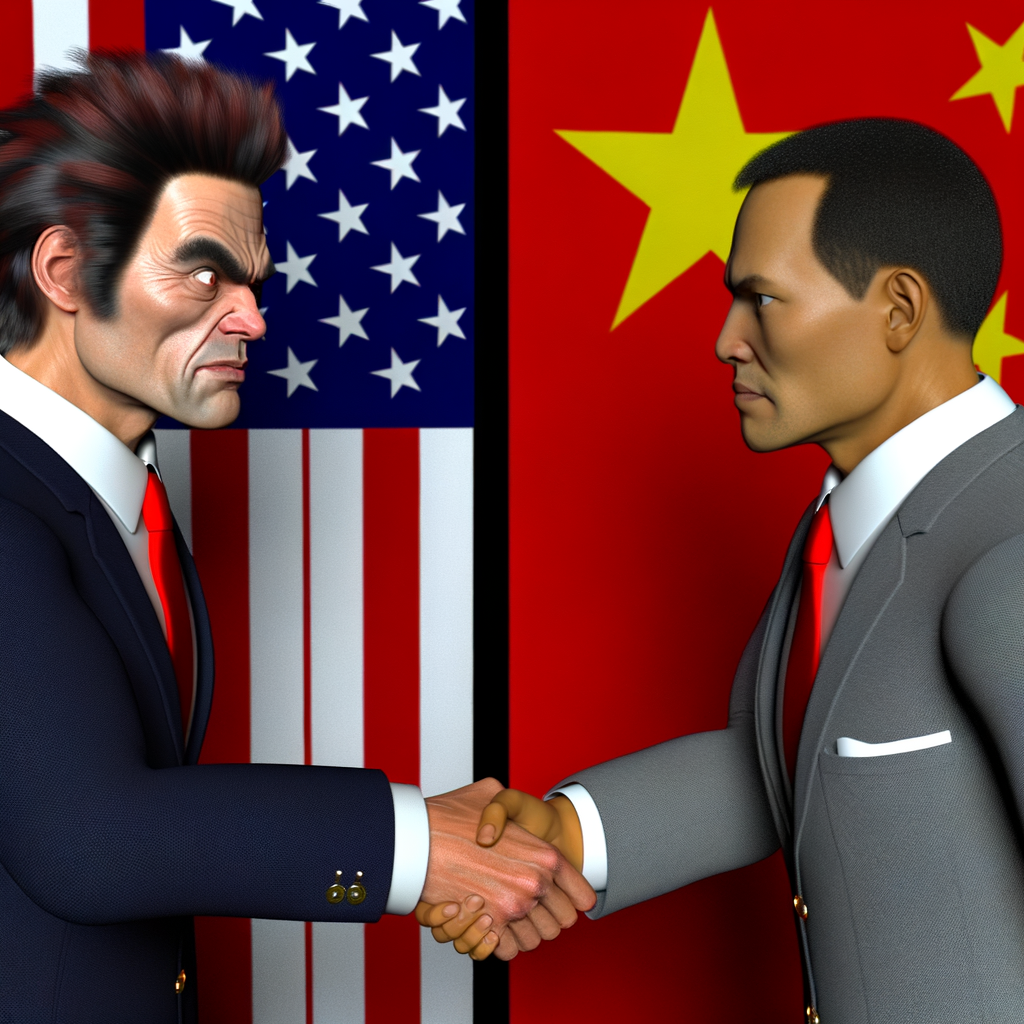
Title: Implications of Trump’s Nomination of Pentagon Chief on U.S.-China Military Relations
Body:
Experts express concerns that Donald Trump's choice of Pete Hegseth as the next Secretary of Defense might lead to increased uncertainty in the already delicate U.S.-China military relations.
Hegseth, aged 44, works as a political commentator for Fox News and is a veteran of the military with service experience in Iraq and Afghanistan. He is recognized for his regular criticism of the media and the Democratic Party, and he adopts a tough approach towards China.
During a promotional interview for his latest book, Hegseth remarked, "China is constructing a military force with the sole purpose of overcoming the United States." He further noted that the US is "consistently ten years behind and always battling the previous conflict."
Last year, he stated on his TV show that China aimed to surpass the US in cultural, financial, and technological domains by utilizing their expanding network of allies. He remarked that US President Joe Biden "clearly did not show sufficient concern to address it."
Zhu Feng, the executive dean at the School of International Studies at Nanjing University, expressed concerns that Hegseth's nomination might adversely affect military relations between the US and China.
"He said that despite his extensive experience in military service, he does not have a background in occupying roles within the US military and defense establishment."
Discover more from Automobilnews News - The first AI News Portal world wide
Subscribe to get the latest posts sent to your email.
China
China Extends Public Holidays but Retains Controversial ‘Holiday Swap’ System: Mixed Reactions to New Calendar Changes
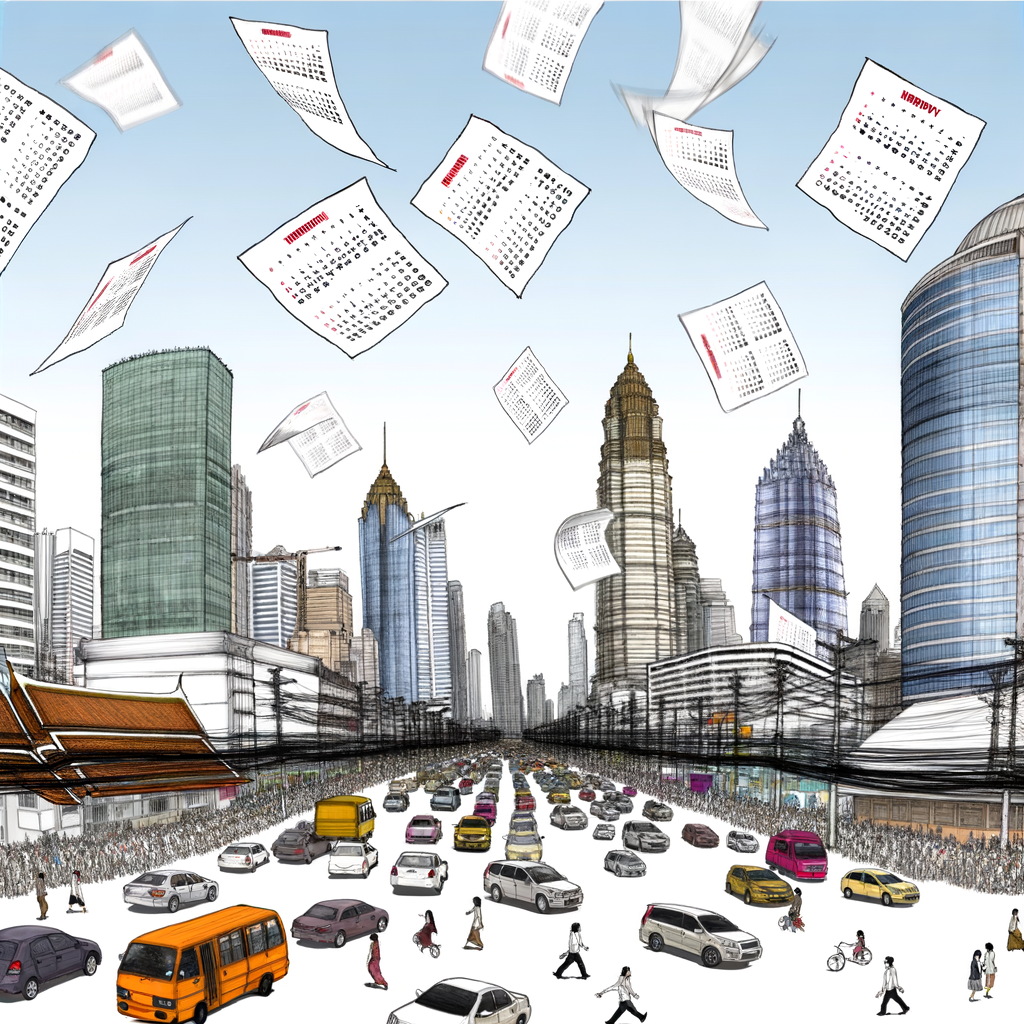
Chinese employees will receive an additional two days off, including an extended Lunar New Year celebration. While two public holidays are being lengthened by a day, the continued existence of the widely disliked 'holiday swap' system dampens excitement.
On Tuesday, China declared that the number of public holidays for the next year will be increased by two days, bringing the total to 13.
Starting next year, the duration of the Spring Festival will increase from three days to four, incorporating Lunar New Year's Eve into the festivities.
The customary May 1 Labour Day celebration will be prolonged to include the subsequent day as well.
Outside of public holidays, employees in China generally receive between five to 15 days of annual leave. Many choose to schedule these days following significant national celebrations like the Lunar New Year or the National Day in October to maximize their vacation period.
While many nations have similar customs, China specifically employs a system called tiaoxiu, or "holiday swap," which involves adding typical days off, such as weekends, to the public holiday period to prolong the vacation.
Discover more from Automobilnews News - The first AI News Portal world wide
Subscribe to get the latest posts sent to your email.
China
Trump’s Victory Spells Defense Budget Dilemma for Taiwan: Navigating New US Expectations Amid Rising PLA Threats

Donald Trump's Victory Could Spell Trouble for Taiwan's Defense Budget
Taiwan may encounter unrealistic demands from the incoming U.S. President, who has urged the nation to significantly boost its defense expenditures.
This has raised immediate concerns regarding Taiwan's capacity to fulfill these requirements and obtain essential military support from the United States as the island confronts an escalating menace from the People's Liberation Army (PLA).
Trump stated that Taiwan needs to contribute more towards its defense expenses, suggesting that American backing depends on Taipei's financial input.
During a podcast with Joe Rogan on October 25, Trump claimed that Taiwan is "stealing our chip business," reiterating his view that the island should contribute more to receive American support.
For the government of Taiwan's pro-independence Democratic Progressive Party (DPP), these expectations are almost impossible to meet.
Experts believe that achieving a 10 percent GDP growth target is likely unattainable, but there is a strong bipartisan agreement in the U.S. advocating for a spending target of 3 to 5 percent, which will be more difficult to disregard.
Discover more from Automobilnews News - The first AI News Portal world wide
Subscribe to get the latest posts sent to your email.
China
Beijing Updates Sansha City Map Amid South China Sea Tensions, Assigns New Postcodes Following Philippine Maritime Law

South China Sea: Beijing Releases Updated Map of Sansha Amid Escalating Dispute Over Islands
Shortly after Manila passes legislation concerning sea lanes, Sansha, established to reinforce China's territorial claims in disputed areas, receives updated maps and postal codes.
The city includes two contested archipelagos – the Paracels and the Spratlys, referred to in Chinese as Xisha and Nansha Islands, respectively – along with a submerged atoll.
On Sunday, the Ministry of Natural Resources unveiled a revised city map that now includes the districts of Xisha and Nansha, established in 2020, which had been omitted from earlier editions.
Established in 2012, Sansha is a city in China's southern island province of Hainan, formed to reinforce China's territorial claims over the resource-abundant South China Sea.
The Ministry of Civil Affairs has allocated administrative region codes to both districts. These identifiers are utilized for census and administrative functions, and are commonly found as the initial six digits on the identity cards of individuals born and registered in that region.
Time: 09
Historical Significance, Economic Value, and Military Strategy: The Reasons Behind Beijing's Interest in the South China Sea
In a distinct announcement on Sunday, China Post declared that the Nansha district of the city has been assigned new postal codes. Additionally, it was stated that three populated islands within the Xisha district—Woody Island, Tree Island, and Jinqing Island—will maintain their current postal codes.
Discover more from Automobilnews News - The first AI News Portal world wide
Subscribe to get the latest posts sent to your email.
China
Security Surge in Zhuhai: China Tightens Measures Following Fatal Car Attack
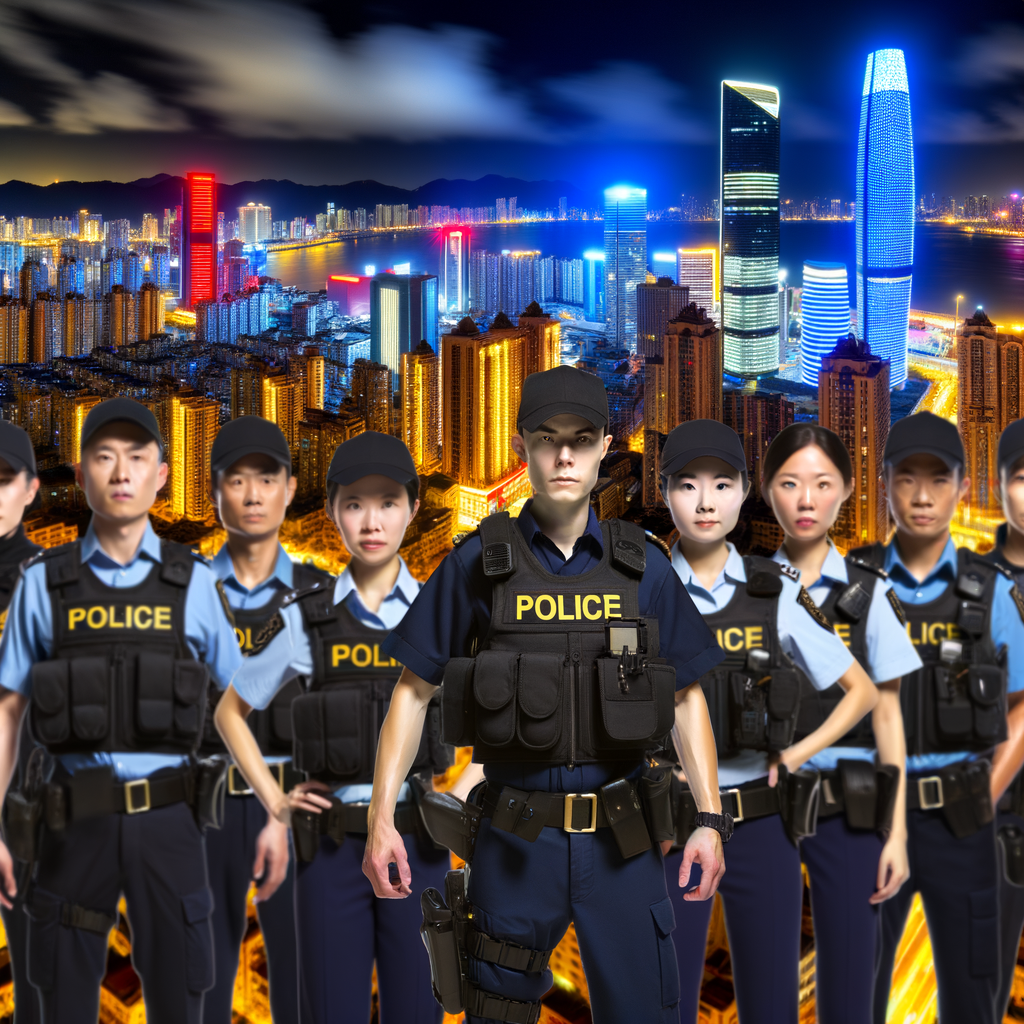
Zhuhai Car Incident: China Enhances Safety Measures Amidst Search for Potential Threats
Authorities have increased police patrols to reassure the public following the incident on Monday evening, an official reports.
Authorities have launched an investigation and are searching for those responsible for the attack, a Guangdong official reported. They noted that security measures have been strengthened, particularly in densely populated locations.
Time: 01
Homage Paid to Victims of Fatal Vehicle Assault in Southern China
"The Guangdong official stated, 'We've deployed additional police forces from various cities to Zhuhai. The main goal is straightforward – it's important that the visibility of police is enhanced, making the public feel more secure.'"
An additional representative from Guangzhou stated that in response to directives from the Chinese leadership, the authorities are taking steps to avert similar incidents.
"The Guangzhou representative emphasized the urgency of the situation, stating, 'In light of the tragic event in Zhuhai, this has become our main focus.' They explained that the individual involved in the Zhuhai incident reportedly faced personal relationship challenges, leading to the current initiative to pinpoint and support local residents undergoing similar issues. The goal is to prevent any similar occurrences."
An additional official from Guangdong emphasized the importance of ensuring public safety following the incident.
Discover more from Automobilnews News - The first AI News Portal world wide
Subscribe to get the latest posts sent to your email.
China
Tragedy Strikes Zhuhai: Eyewitness Describes Horrific Car Attack as ‘Earthquake-Like’ Event

Exclusive | Zhuhai car incident: Victims describe noise 'similar to an earthquake', unable to flee in time, says witness
A participant in a local fitness group reports that an SUV unexpectedly rammed into pedestrians from behind as they walked along a path in the southern Chinese city.
A devastating vehicle assault in Zhuhai, a city in southern China, claimed the lives of numerous individuals. One survivor likened the incident to an earthquake, recounting how an SUV unexpectedly plowed into a crowd of people who were engaged in physical exercise.
Authorities reported that on Tuesday evening, an incident that stunned the nation resulted in 35 deaths and 43 injuries.
A 47-year-old local resident, who requested to be referred to only by his last name, Chen, reported on Wednesday that he was participating in a walking exercise with a group on a fitness and running trail near a local sports stadium when the attack occurred Monday night.
Chen managed to get away as he was positioned on the outskirts of the group; had he been in his typical central spot, his chances of survival might have been slim.
He informed the Post that on most evenings, hundreds of walking enthusiasts from six distinct groups gathered there to exercise, estimating that there were about 300 people present at the time.
Around 7:30 in the evening, the group started their hike on the path. However, within 20 minutes, they were startled by a noise resembling a rock tumbling down a mountain, just as an SUV barreled towards them without any sign of deceleration.
Discover more from Automobilnews News - The first AI News Portal world wide
Subscribe to get the latest posts sent to your email.
China
Tragedy in Zhuhai: Survivor Recounts Horrific SUV Attack on Trail, Describes Chaos as ‘Like an Earthquake
Exclusive | Zhuhai Vehicle Incident: Witnesses Describe Sudden Impact, Liken Noise to 'Earthquake'
A participant from a local fitness group reported that an SUV unexpectedly rammed into individuals from behind as they were utilizing a path in the southern Chinese city.
A survivor likened the vehicular assault that took the lives of numerous individuals in Zhuhai, a city in southern China, to "an earthquake." The individual recounted how an SUV unexpectedly plowed into a crowd from behind as they were engaged in physical exercise.
Authorities reported that on Tuesday evening, an incident that has stunned the nation resulted in 35 fatalities and 43 injuries.
A 47-year-old local resident, who preferred to be referred to by his last name Chen, stated on Wednesday that he was working out with a group of walkers on a fitness and running trail near a local sports stadium when the attack occurred Monday night.
Chen narrowly avoided disaster as he was positioned on the fringe of the crowd. Had he been in his typical central spot, his chances of survival could have been much slimmer.
He informed the Post that nearly every evening, hundreds of walking enthusiasts from six distinct groups gathered there for exercise, estimating the crowd at about 300 people at that time.
Around 7:30 in the evening, the group started their hike along the path. However, within 20 minutes, they were startled by a noise resembling a rock tumbling down a mountain, just as an SUV barreled toward them, showing no signs of slowing down.
Discover more from Automobilnews News - The first AI News Portal world wide
Subscribe to get the latest posts sent to your email.
China
Driving Success in the East: Unveiling the Secrets of the Largest Automotive Market Amidst EV Boom and Strategic Partnerships

TL;DR: China stands as the top and largest automotive market globally, offering significant opportunities and challenges to both domestic car brands and foreign automakers. The surge in demand for Electric Vehicles (EVs) and New Energy Vehicles (NEVs), fueled by urbanization, a growing economy, government incentives, and environmental concerns, has shaped a unique market landscape. Tapping into this market requires foreign automakers to enter joint ventures, navigating the complex regulatory landscape and leveraging strategic partnerships to access the vast consumer base. Success hinges on understanding consumer preferences towards innovation and sustainability, and utilizing technological advancements amidst intense market competition.
In the fast-paced lanes of global commerce, the China automotive market stands out as a beacon of rapid growth and unparalleled potential, securing its position as the world's largest automotive market. This dynamic sector, fueled by a booming economy, an expanding middle class, and accelerated urbanization, has become a pivotal battleground for both domestic car brands and foreign automakers alike. As they navigate the intricate regulatory landscape through strategic partnerships and joint ventures, these players are keenly focused on capturing the hearts and wallets of Chinese consumers.
The surge in demand for Electric Vehicles (EVs) and New Energy Vehicles (NEVs), driven by robust government incentives and mounting environmental concerns, is reshaping the contours of the market. This transformative shift not only highlights China's commitment to innovation and sustainability but also underscores the importance of understanding consumer preferences, technological advancements, and the regulatory environment to thrive in this competitive arena.
With an eye on top trends and a finger on the pulse of the market, our comprehensive exploration delves into the forces propelling China's automotive sector forward. From the electrification of the industry to the strategic maneuvers behind cross-border alliances, we unravel the complexities that define the largest automotive market. This article serves as a roadmap for understanding how urbanization, a growing economy, and a green agenda are steering China towards a future where domestic prowess and international collaboration drive the wheels of progress. Join us on this journey through the vibrant streets of China's automotive landscape, where innovation, competition, and strategic partnerships fuel the race for supremacy in a market that's as dynamic as it is challenging.
1. "Navigating the Road Ahead: Understanding the Dynamics of the World's Largest Automotive Market"
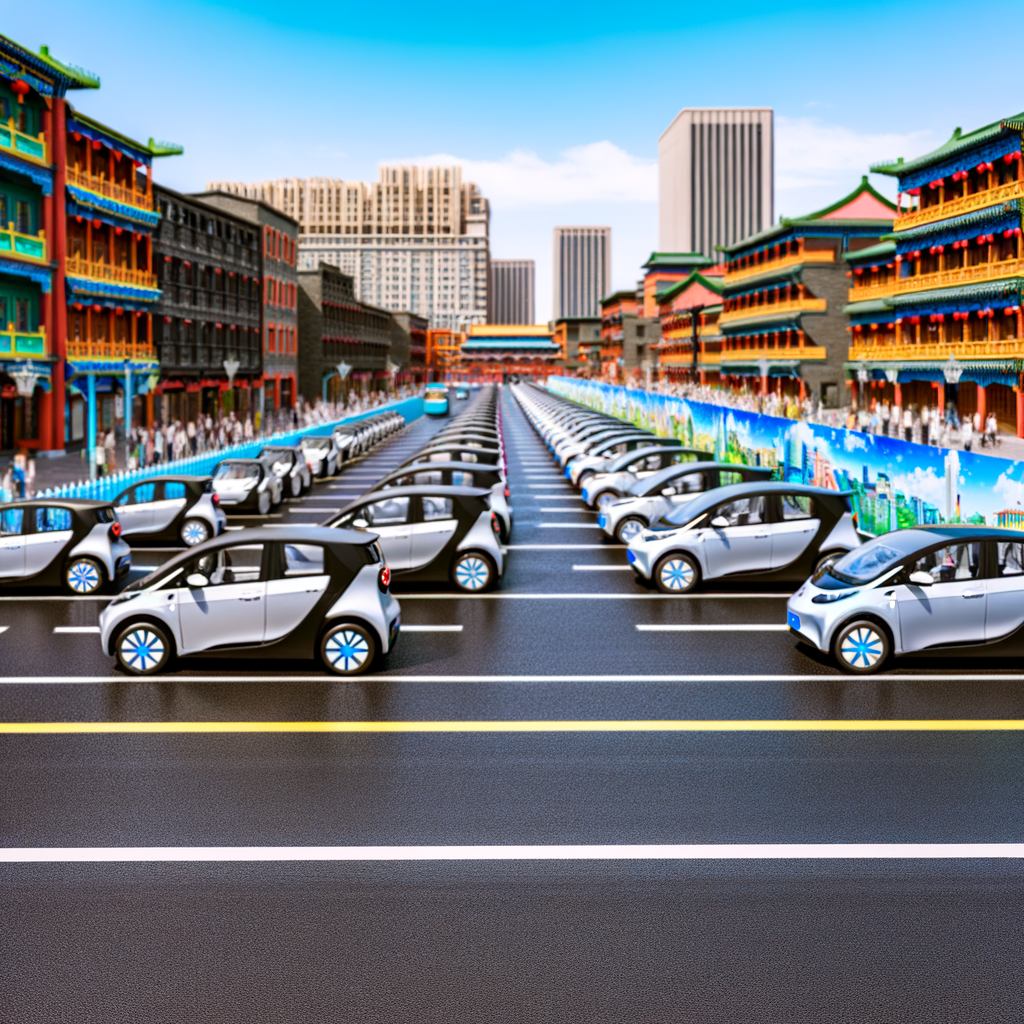
Navigating the complex and vibrant terrain of the world's largest automotive market requires a multifaceted understanding of various driving factors, from shifting consumer preferences to the intricate regulatory landscape that governs the sector. China, standing at the forefront as the largest automotive market, presents a unique amalgamation of opportunities and challenges for both domestic car brands and foreign automakers.
The burgeoning middle class, coupled with rapid urbanization and a growing economy, has fueled an unprecedented demand for vehicles. This surge is not limited to traditional automobiles but extends significantly towards electric vehicles (EVs) and new energy vehicles (NEVs). These segments have seen exponential growth, primarily driven by government incentives aimed at curbing environmental concerns and promoting sustainable development. The emphasis on EVs and NEVs reflects not only a shift in consumer preferences but also highlights the country's commitment to leading technological advancements in the automotive industry.
Foreign automakers looking to penetrate or expand their presence in this lucrative market often find themselves forming joint ventures with local Chinese companies. This strategic partnership approach is necessitated by China's complex regulatory landscape, which can be daunting to navigate without local expertise. These collaborations offer mutual benefits: for foreign brands, a pathway to accessing a vast consumer base and for domestic companies, an opportunity to upscale their technological prowess through international know-how.
The market competition in China is fierce, with both domestic and international players vying for consumer attention. Success in this competitive arena requires not just an understanding of the regulatory hurdles but also an acute awareness of consumer preferences, which are continually evolving. Today's Chinese consumers are more informed and discerning, seeking not just mobility but also vehicles that align with their lifestyle choices and environmental values.
Technological advancements play a critical role in shaping the future of the automotive industry in China. Innovations in autonomous driving, connectivity, and electric powertrains are increasingly becoming key differentiators. Companies that can leverage these technologies while aligning with government incentives and environmental policies are likely to gain a competitive edge.
In conclusion, the dynamics of the world's largest automotive market are influenced by a confluence of factors including urbanization, a growing economy, environmental concerns, and the push for innovation. For automakers, both domestic and foreign, the path to success involves not just navigating the regulatory landscape but also forging strategic partnerships, understanding and adapting to consumer preferences, and staying at the forefront of technological advancements. The China automotive market, with its vast potential and inherent challenges, remains a critical battleground for the global automotive industry.
In conclusion, the journey through the labyrinth of the world's largest automotive market reveals a landscape marked by its sheer scale, complexity, and forward momentum. China's position as the top player in the global automotive industry is underpinned by its growing economy, increasing urbanization, and an expanding middle class with evolving consumer preferences. The tilt towards Electric Vehicles (EVs) and New Energy Vehicles (NEVs), driven by environmental concerns and robust government incentives, highlights the country's commitment to sustainable mobility solutions. This shift, coupled with the intricate regulatory landscape, has necessitated strategic partnerships and joint ventures between foreign automakers and domestic car brands, enabling access to the vast consumer base while navigating market intricacies.
The competitive dynamics of the market are fueled by a blend of domestic prowess and international collaboration, underscored by technological advancements that are setting new benchmarks in automotive innovation. The emphasis on EVs and NEVs not only aligns with global environmental trends but also positions China as a pivotal player in the green revolution within the automotive sector. As the market continues to evolve, understanding local regulations, consumer behavior, and the importance of strategic partnerships will remain crucial for success in this dynamic and competitive environment.
The road ahead for the China automotive market is one of opportunity and challenge, shaped by government policies, market competition, and the relentless pace of technological progress. For industry players, both domestic and international, the key to navigating this landscape lies in adapting to the changing contours of consumer demand, regulatory frameworks, and environmental imperatives. As the largest automotive market in the world continues to grow and transform, its influence on the global automotive landscape will undoubtedly become even more significant, charting the course for the future of mobility on a global scale.
Discover more from Automobilnews News - The first AI News Portal world wide
Subscribe to get the latest posts sent to your email.
-

 Tech2 months ago
Tech2 months agoRevving Up Innovation: How Top Automotive Technology Trends are Electrifying and Steering the Future of Transportation
-

 Tech4 weeks ago
Tech4 weeks agoRevving Up Innovation: Exploring Top Automotive Technology Trends in Electric Mobility and Autonomous Driving
-

 Tech2 months ago
Tech2 months agoRevving Up Innovation: The Drive Towards a Sustainable Future with Top Automotive Technology Advancements
-
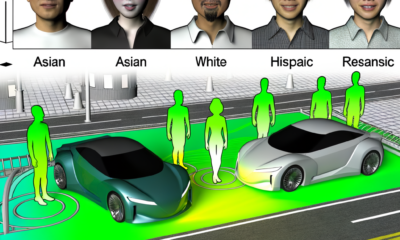
 Tech1 month ago
Tech1 month agoRevolutionizing the Road: How Top Automotive Technology Innovations Are Paving the Way for Sustainability and Safety
-

 AI3 weeks ago
AI3 weeks agoNews Giants Wage Legal Battle Against AI Startup Perplexity for ‘Hallucinating’ Fake News Content
-

 Tech1 month ago
Tech1 month agoRevving Up the Future: How Top Automotive Technology Innovations are Accelerating Sustainability and Connectivity on the Road
-

 Tech4 weeks ago
Tech4 weeks agoRevving Up Innovation: How Top Automotive Technology is Shaping an Electrified, Autonomous, and Connected Future on the Road
-

 Tech2 months ago
Tech2 months agoRevving Up Innovation: How Top Automotive Technology is Shaping Electric Mobility and Autonomous Driving










